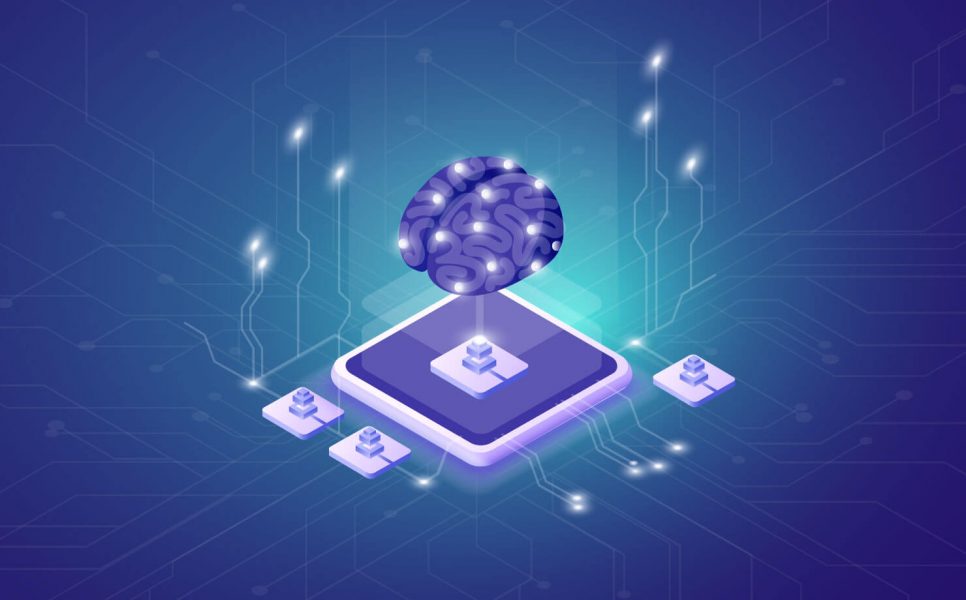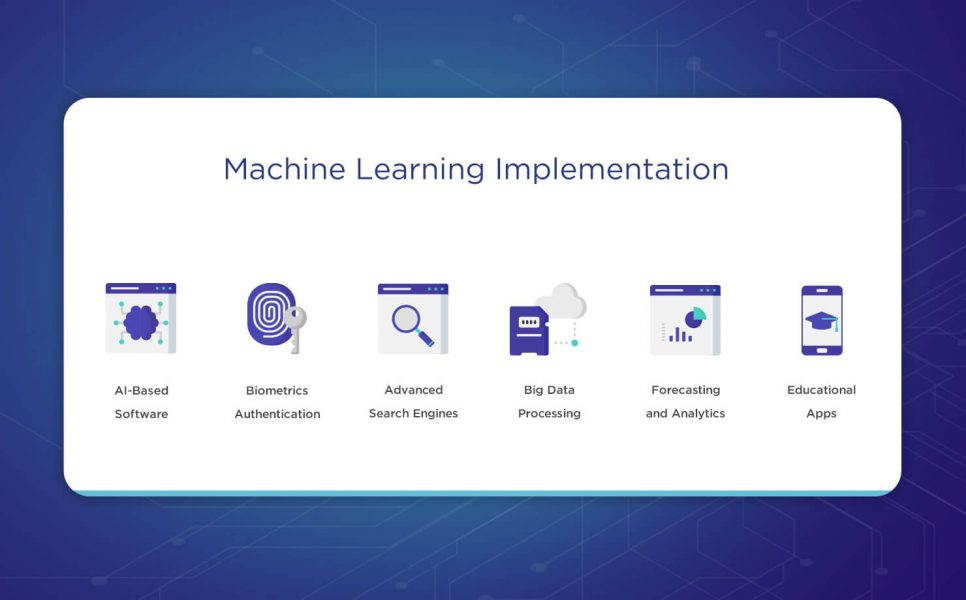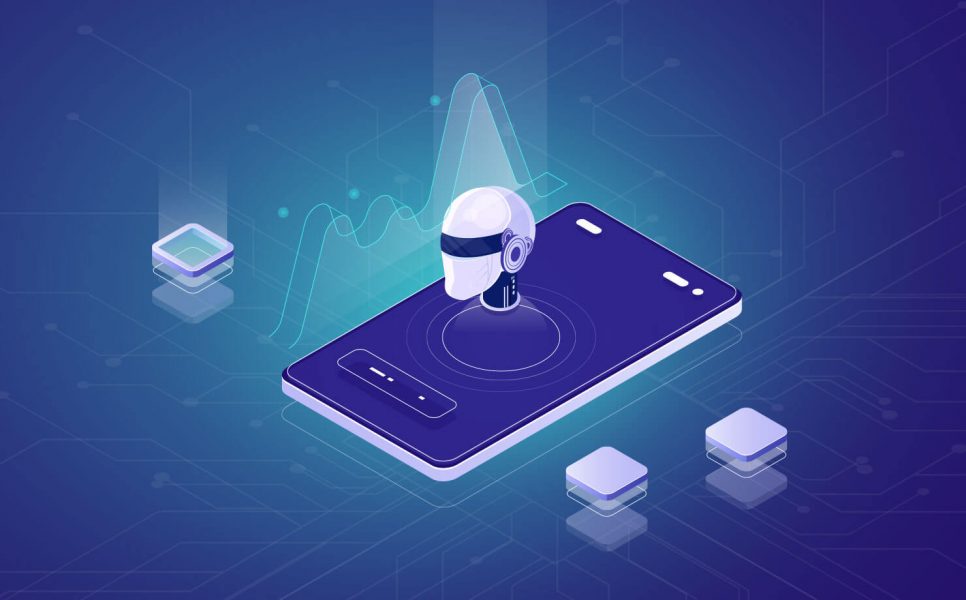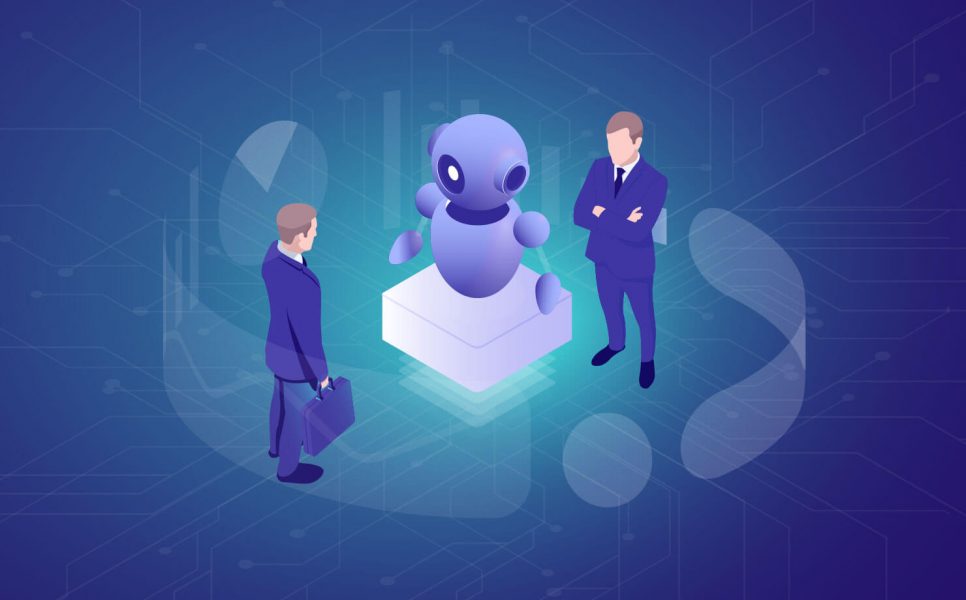Only a couple of years ago, an ordinary user could face the results of machine learning (ML) only in entertaining software like Siri or Alexa. Today, its techniques have improved to the point that many public and private organizations use them. For example, to ensure network security or even diagnose diseases in the early stages. The success of your business may also depend on developments in the field of ML? Let’s discuss the main vectors of progress in this IT niche.
What are the benefits of introducing the ML concept to end user applications?
Before we start discussing the machine learning future, let’s determine what advantages this concept provides to regular applications:
- Independent extraction of information based on previous data or user behavior;
- Personalization of user experience;
- Reduction of the user’s direct participation in obtaining the result;
- Increase in the number of autonomous functions in the application;
- Increase in the reliability and efficiency of the application at a minimal cost.
How can all these benefits affect the future of machine learning? Discover below.
Technical aspects of implementing ML-based applications
The basic principle of machine learning applications is the adaptive automated generation of problem-solving models. Based on experience in solving similar tasks, the program must “learn” to generate algorithms that would allow obtaining correct results. To put this in place, a developer must have the knowledge of mathematical statistics, numerical methods, optimization methods, probability theory, graph theory, as well as other complex data manipulation techniques.
Even so, today, there are specialized frameworks and platforms for ML-based projects. These allow working with all the mentioned methods and techniques simply and comfortably. In particular, we should mention such software products as:
- TensorFlow;
- Apache Spark;
- Apache Mahout;
- Apache Singa;
- H2O;
- mlpack;
- Qualcomm Neural Processing Engine SDK;
- Core ML;
- Shogun ML;
- Accord.NET;
- Theano;
- Amazon Machine Learning;
- Microsoft Azure ML Studio;
- Microsoft Cognitive Toolkit;
- Microsoft Distributed Machine Learning Toolkit.
With their aid, a programmer needs not to bother with the implementation of mathematical models and devote their time to developing the application’s interface and business logic.
Check out successful business tips that help pave a way to the top of the qualitative services and good revenue.
Top six potentially most promising areas for Machine Learning implementation
Why machine learning is the future? In which areas of activity it will develop most intensively?
1. AI-based software solutions
The question “Is machine learning the future?” inspires associations with the famous “I, Robot” movie.
ML is one of the subsets of artificial intelligence (AI) science. It includes the creation and implementation of algorithms that provide computers with the ability to independently search for the most efficient solutions. This is why machine learning is often used in the development of AI projects.
Judging by the experts’ predictions, AI becomes one of the most promising IT activities. Thus, if your goal is to create a successful product guaranteed to attract the masses, you should definitely look in the direction of artificial intelligence solutions. These are products for creating a personalized user experience – be it a smart assistant or a marketplace’s search engine.
2. Biometrics authentication
Modern smartphone users already cannot imagine their lives without fingerprint authentication. In the nearest future, it is going to enter every high-security sphere. For example, some countries already introduce biometric citizen IDs. The competition in this niche is not too tangible yet. So, there is a place for innovative products.
Any biometric data recognition application performs the following actions:
- Learning Phase:
-
- Recognition of the biometric data;
- Conversion and normalization of the recognition results;
- Model training.
- Usage phase:
-
- Recognition of the biometric data;
- Conversion and normalization of the recognition results;
- The decision on the access rights: 0 – deny, 1 – allow.
Both model training and access classification steps use the aid of the ML algorithms to increase the accuracy of the recognition.
3. Advanced search engines
Did you know that for several years Netflix streaming service has been using machine learning in its search engine to offer users the customized content? You can do the same by integrating the ML-based search with your existing services to optimize the user experience. Besides using user history and clicks for personalization, you can add the functions of “smart” voice search and image search.
This technology is used in the development of many upcoming e-commerce products, simplifying the interaction of users with the interface and, thereby, helping to urge them to the final stage of the sales funnel.
4. Big Data processing
Big data is a special category of information that comes unstructured and in huge amounts. Of course, processing it requires tremendous processing power. The easiest way to do this is to use machine learning.
As for the implementation areas, big data processing solutions find application in fintech and network security first. In the first case, an application based on machine learning automates transaction processing. In the second – it aids identifying both existing viruses/worms/attacks and the generally anomalous behavior.
The major thing you need to prepare for is that big data solutions need powerful servers. Otherwise, not even the most perfect ML algorithm will bring you the expected results.
5. Forecasting and analytics
Some researchers believe that very soon a profession of a financial analyst will fade into oblivion as their responsibilities can be adopted by the data science ML-based software.
Today, even with specialized applications for storing and systematizing data, financial analysts spend a lot of time generating reports. Moreover, their work is prone to the influence of the human factor. Errors due to inattention made in analytics incur losses in thousands of dollars.
The situation with market prognostics is similar: it is much more convenient to load data into special ML-based software and get the most accurate forecasts after only a few seconds, rather than being guided by the subjective vision of an experienced but biased (to some extent) analyst.
6. Educational applications
Adaptive individualized learning is one of those industries that would benefit the most from the future scope of machine learning. The fact is that nowadays, more and more students seek to study remotely to save time and strive to choose the courses that they like.
In turn, machine learning will help to devise individual schedules and to choose the optimal pace of new material presentation, based on the previous academic performances. This will also allow talented teachers reaching much larger audiences as fast as possible.
Read also: Machine Learning Use Cases
Let us sum up our brief review of the future of machine learning topic. As you may see, machine learning provides wide capabilities for software developers. If you have an idea for a solution that would benefit from ML algorithms, contact us! We will create for you a product that would employ the top technologies while being simply maintained and scaled.
Need a qualified team?
Unlock new business opportunities with the first-rate dedicated development team.











